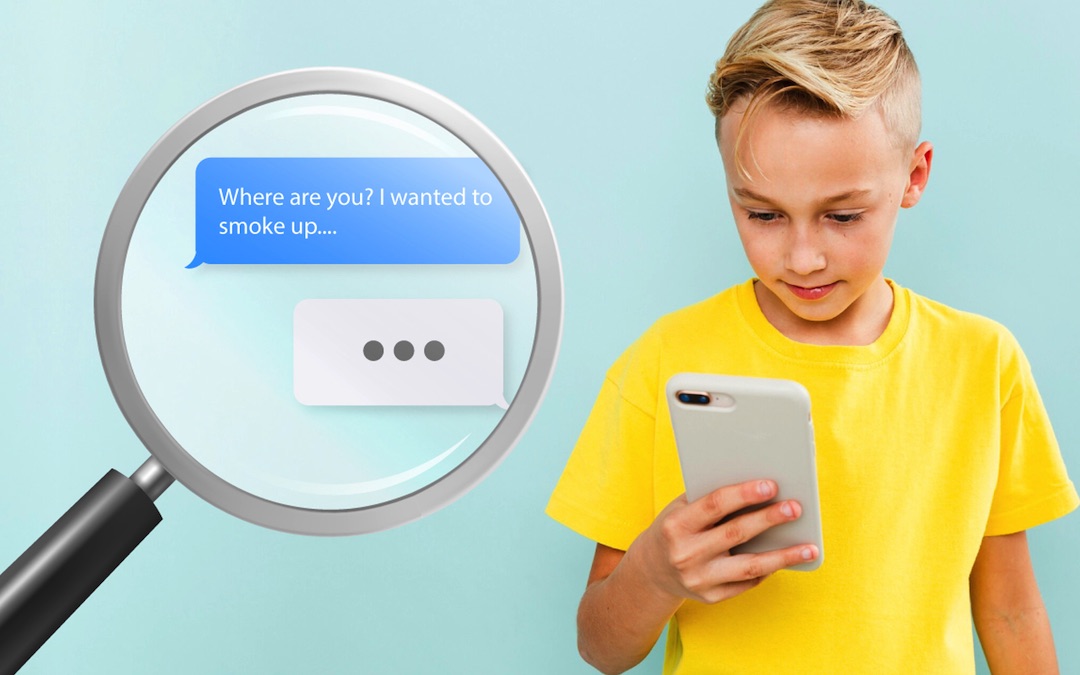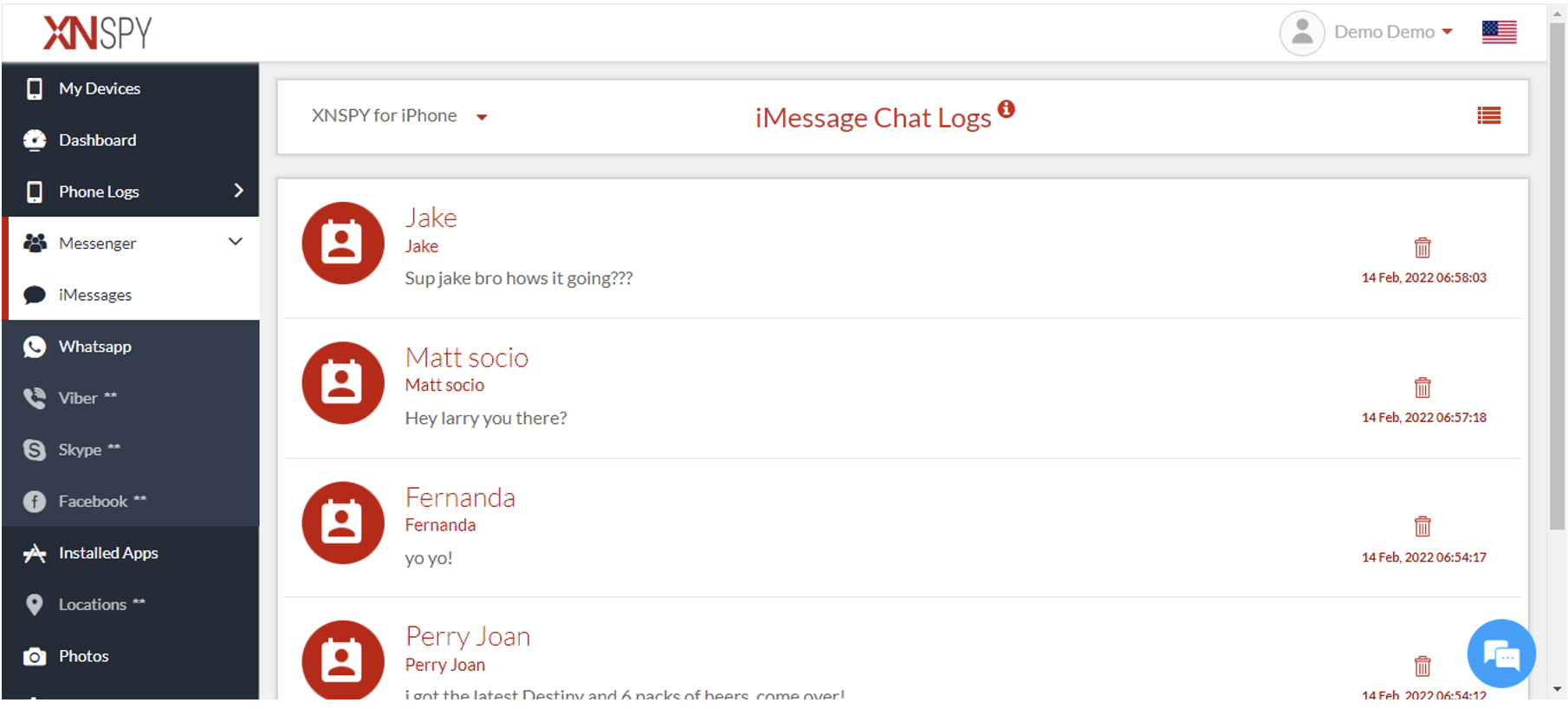
Children with cell phones is an issue that’s going to be the center of the discussion for this century. Most parents believe that early teens should not be allowed cell phones; however, they give them for various reasons, including social pressure, educational purposes, or staying connected with them when they are away.
According to the survey, more than 75% of teens worldwide use cell phones, so it has become apparent that it is not easy to prevent them from using them. Parents should instead, opt for the next big thing, i.e, monitoring.
While smartphones provide several benefits to children, parents worry about other things, which include easy and open access to adult content, cyberbullying, and constant communication with friends about topics that may and may not agree with their age.
With smartphones, especially iPhones, central to kids' communication, many parents prefer to monitor how their children interact with others. An average of 54% of teens, out of 75 % who use phones, prefer texting, so text messages should be the priority.
Monitoring is essential for their digital safety. However, privacy and trust are critical to a healthy parent-child relationship. In-person communication is the most recommended method. Even using any other method, talk straightforwardly and monitor their messages.
To help you with this, we’ve put together our guide using methods from this resource so you can get accurate and helpful information on how to monitor your child's text messages.
3 Best Ways to Monitor Text Messages on iPhone
Now comes the big question: how can I monitor my child's text messages? Well, iPhone monitoring may not be as straightforward as monitoring the usage of any other device your kid uses. Apple understands the risks we put our children in, so it provides a few methods and parent control for monitoring. Combining them with authentic monitoring apps can provide complete insights into their communication, ensuring cybersecurity for your children.
1. Using a Monitoring App
The first monitoring strategy should always be asking them about their online activities, building trust, and creating a friendly, open, and nonjudgmental environment. While all these methods are essential, they may not be enough, especially if your child has something to hide. In that case, you require a robust monitoring app.
There are several monitoring apps; however, not all of them log accurate messages, especially for iPhones. You require an app with multiple options for tracking messages, like XNSPY.
XNSPY is a powerful tool designed to give parents detailed insights into their child’s phone activity. It allows you to monitor SMS and iMessages and even access deleted messages. Each message is logged with timestamps and contact details, making it easier to see exactly who your child communicates with and when.

XNSPY primarily lets you view incoming and outgoing text messages on your child’s iPhone. The messages are shown on the dashboard. You can click on the contact to view the whole conversation, providing an easy and user-friendly way to monitor all the messages.
Each message includes metadata, such as when it was sent and received and the sender's or recipient's contact information. The app also shows the messages or conversations your child deletes, providing further insights into their online communications.
Besides iMessage, XNSPY monitors messages from popular social media platforms like WhatsApp, Facebook Messenger, and Instagram. Most teens are connected to the same friend on several platforms and continue communicating with all of them.
With access to all the platforms, you will be aware of your child’s broader digital interactions and provide them with informed guidance.
XNSPY includes a keylogger feature that records everything typed on the device, including messages, comments, and browser searches. With this comprehensive coverage of your child's activities, there is no chance of missing essential text messages.
Message monitoring is essential for your child’s cybersecurity. But it would help if you did not do it at the cost of privacy. XNSPY never encourages its customers to use the app unethically. They have explained all the legalities of monitoring and that explicit consent is required for children 18 or above. For kids under 18, permission is not required legally, but it is best to inform them about the monitoring.
2. Apple iCloud Backups
Apple iCloud backups can also assist you in monitoring your child’s iPhone messages. It may not be as thorough, but you can access the messages for monitoring. iCloud stores all texts, messages, attachments, health data, photos, videos, etc.
This method works by accessing the backups from your child’s iPhone, including text messages, photos, and other phone data.
Here’s how it works
- Step 1: Log into iCloud: You'll need your child’s Apple ID and password to access their iCloud account.
- Step 2: Backup Data: Ensure that your child’s iPhone is set to back up to iCloud automatically or manually back up data periodically.
- Step 3: Restore Backup: Open iCloud.com from the browser. Log in with your ID and password. Access all the required data, including text messages. You can also restore that data to another device using your child’s iCloud credentials.
This method is often used when a dedicated monitoring app isn’t an option. It is less comprehensive but can still provide valuable insights into who your child is communicating with and what’s being said. However, it’s important to note that you’ll only be able to view data that was present at the time of the backup, and messages sent or deleted after the backup won’t be accessible until the next backup is completed.
3. Family Sharing with Screen Time
Apple provides a built-in, non-invasive solution through Family Sharing and Screen Time. These tools may not give you direct access to your child’s text messages. However, they can help you manage and monitor your child’s device use in other ways and mildly assist you in managing messages.
Family Sharing allows you to create a family group to share purchases, apps, and media across devices. You can also set restrictions on your child’s phone when paired with Screen Time.
The tool lets you view detailed activity reports showing how much time kids spend on apps, websites, and their devices. You can set time limits for specific apps or categories, like games or social media, which automatically apply to your child’s Apple devices.
The feature that directly resonates with iMessage is the ability to limit who your child can contact at specific times, allowing you indirect control over message activities.
While family sharing and screen time provide several control options, these tools aren’t designed to provide in-depth monitoring. For example, you may control who your children talk to, but you may not know what they discuss with that contact through messages.
If you have heard something from another source and want to take action, you can use the feature to limit conversation. Considering that you have come across something problematic.
Thus, the tool may not provide insights into messages but offers a balanced, noninvasive way to guide your children about phone usage, protect their online security, and encourage healthy online habits.
Is it Okay For Parents to Read Their Child’s Text Messages?
Deciding whether to monitor your child’s text messages can be a delicate issue, leaving you wondering if it is the right choice. On one hand, monitoring can safeguard children from potential dangers like cyberbullying, inappropriate online relationships, or exposure to harmful content. On the other hand, reading a child’s private conversations can feel like an invasion of online privacy, which may damage the trust between you and your child.
In most countries, parents and legal guardians have broad rights to oversee their children’s offline and online activities until they turn 18. This includes the right to monitor text messages, social media interactions, and phone calls without the child’s consent.
However, once your child reaches 18, the legal landscape changes. At that point, they are considered adults, and privacy laws protect their communications. Monitoring without their explicit consent becomes a violation of these laws.
While keeping your child safe online is essential, how you approach monitoring can significantly affect your relationship with them. Even if your child is under 18, the best approach will always be to have an open, honest conversation about why you are monitoring them and the extent of the monitoring. You must assure them it is a protective measure rather than an intrusion.
Create an environment where your child feels comfortable discussing online challenges or uncomfortable situations. Be clear about what content you are monitoring and why. Once you have cleared their mind and communicated your boundaries properly, your children will understand and won’t mind monitoring tools.
Conclusion
Monitoring is crucial for protecting children from the dangers online. Still, it’s essential not to barge into their digital world or demand that they stop interacting with their friends. Responsible monitoring involves guiding your child using tools that offer oversight without being overly invasive.
It is important to stay informed to monitor your child's digital activities effectively. Messages often contain the most valuable insights into their online interactions. While Apple provides some monitoring tools, a straightforward option like XNSPY is ideal if you're looking for a more comprehensive solution.
However, regardless of your chosen method, the most important thing is to use these tools responsibly, always prioritizing open communication and trust with your child.
Share this post
Leave a comment
All comments are moderated. Spammy and bot submitted comments are deleted. Please submit the comments that are helpful to others, and we'll approve your comments. A comment that includes outbound link will only be approved if the content is relevant to the topic, and has some value to our readers.

Comments (0)
No comment